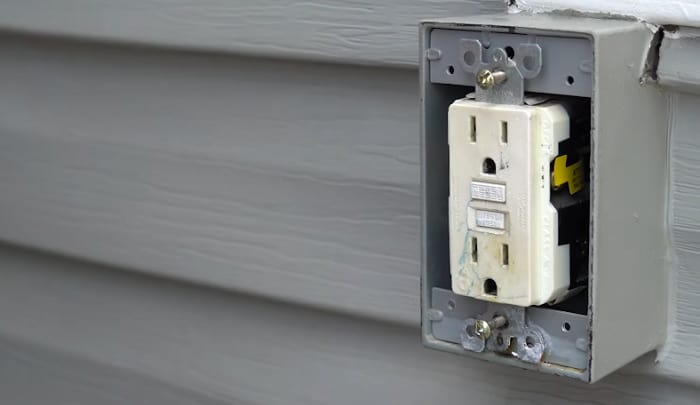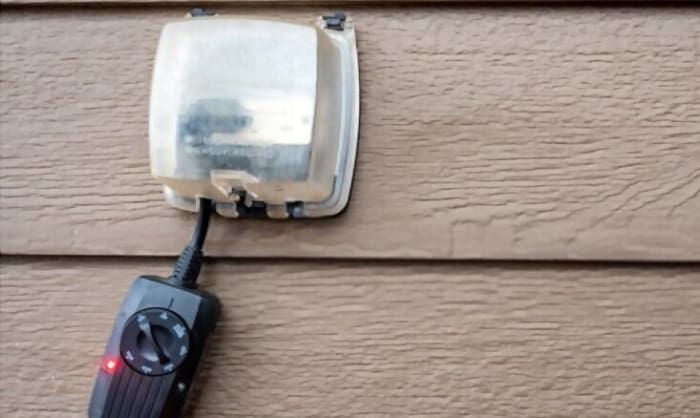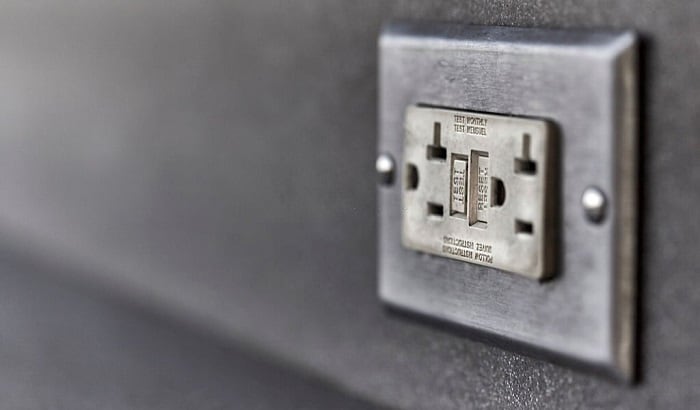You’re about to engage in an electrical wiring project outdoors. Now, you’re wondering, ‘do outdoor outlets need to be GFCI?’
An outdoor GFCI outlet is a requirement by the NEC. Install this type of outlet by following standards to prevent certain hazards.
Continue reading to learn more about the importance of using this fixture. You’ll also gain insight into other relevant yet important information, such as how to wire an outdoor electrical outlet in yard.
Table of Contents
Are GFCI Outlets Required Outside?
The National Electrical Code (NEC) 210.8(F) states that outdoor receptacles need GFCI protection. However, the guideline also mentions that this requirement might not be applicable in certain situations, such as:
- Equipment like surge protectors and sewer lift pumps, which isn’t readily accessible, doesn’t require installing a GFCI outlet outside.
- The repair or replacement of electrical equipment and their pass-through will disconnect other electronics.
How to Install a GFCI Outlet Outside?
Do I need a GFCI outlet outside? If your answer to this question is “yes,” you probably want to set one up. Keep in mind that you need to follow the right steps when installing GFCI outlets. Incorrectly wiring an outside outlet can increase the risks of accidents and injuries.
Also, you need to ensure that the amperage of the outlet fits the amperage of its circuit. For instance, you can wire a 20 amp GFCI outdoor outlet to a circuit of the same size.
Last, shut off the main circuit breaker at the property’s service panel. Don’t work on any electrical assembly while the mains is active to avoid accidents and injuries. Then, use a voltmeter to verify that no power is running through the area’s circuits.
After completing the preparations, follow these general steps to install a GFCI exterior outlet:
What You’ll Need
- GFCI outlet kit
- Drill with a long bit
- Hammer
- Screwdriver
- Utility knife
- Romex wires
Step-by-Step Guide
- Step 1: Take out the existing wall plate for the existing outlet.
- Step 2: Unscrew the fasteners and disconnect the wires on the outlet carefully.
- Step 3: Use a hammer and a screwdriver to remove one of the holes in the outlet’s box.
- Step 4: Attach a long bit to a hand drill and create a hole at the back of the outlet box that passes through the wall.
- Step 5: Place the new electrical box for the GFCI outlet against the wall outdoors, and ensure that it’s level.
- Step 6: Mark the area of the box and drill pilot holes in each of the marked corners.
- Step 7: Cut the marked outline with a saber saw.
- Step 8: Remove one of the holes at the back of the outlet box for the wiring.
- Step 9: Route the wire from the inside outlet and cut the excess with a wire cutter.
- Step 10: Feed the wire into the outside outlet box.
- Step 11: Install and secure the outdoor outlet box. Ensure that the installation is flush.
- Step 12: Use a utility knife to remove the sheathing from the wire. Remove ½ inch of insulation from the wires. Do this on both sides of the wall.
- Step 13: On the outdoor side, connect the exposed wires to the GFCI receptacle to their correct terminals.
- Step 14: Take a separate Romex wire and connect three of its strands to three screws on the indoor outlet. Then, pigtail the Romex wire on the indoor outlet to the Romex wire in the outlet box using wire nuts.
- Step 15: Install and secure the outlet into its box and test if it works as intended.
Take note that you may need a high-powered drill if you need the wiring to go through dense materials. Don’t use a low-powered drill in running holes in concrete walls or other tough and thick materials, which may break the tool.
Frequently Asked Questions
Where Is The Circuit Breaker For Outdoor Outlet?
Perhaps the best procedure to figure out which circuit breaker is for an outdoor outlet is to turn each breaker off and on individually.
Another way is to press the ‘Reset’ button on some GFCI circuit breakers. Then, monitor your devices to see which one turns off.
How To Install Outdoor Outlet Safely?
Following proper safety protocols are vital to ensure a safe and successful installation of an outside outlet. Some preventive measures you should observe are:
- Repair or replace faulty parts and assemblies before proceeding with the installation.
- Ensure the wires have proper enclosures to reduce the risks of electric shocks.
- Make sure that the circuit breaker connected to the outdoor outlet is of the correct size.
- Replace all corroded, rusted, or stripped screws with new models.
Conclusion
You should now have an answer to the question, ‘do outdoor outlets need to be GFCI?’ Make sure to follow the NEC’s guidelines to avoid dangers in installing and using outdoor GFCI receptacles.
Also, don’t forget to take caution to avoid making mistakes while setting up the new outside outlet. Take the time in installing the module, and you can have peace of mind while using electronics.

I am Andrew Wright. With 8 years of experience designing, installing, and maintaining electrical power systems. I love my job, and I have always wanted to offer others the necessary help so they can take care of their houses.



